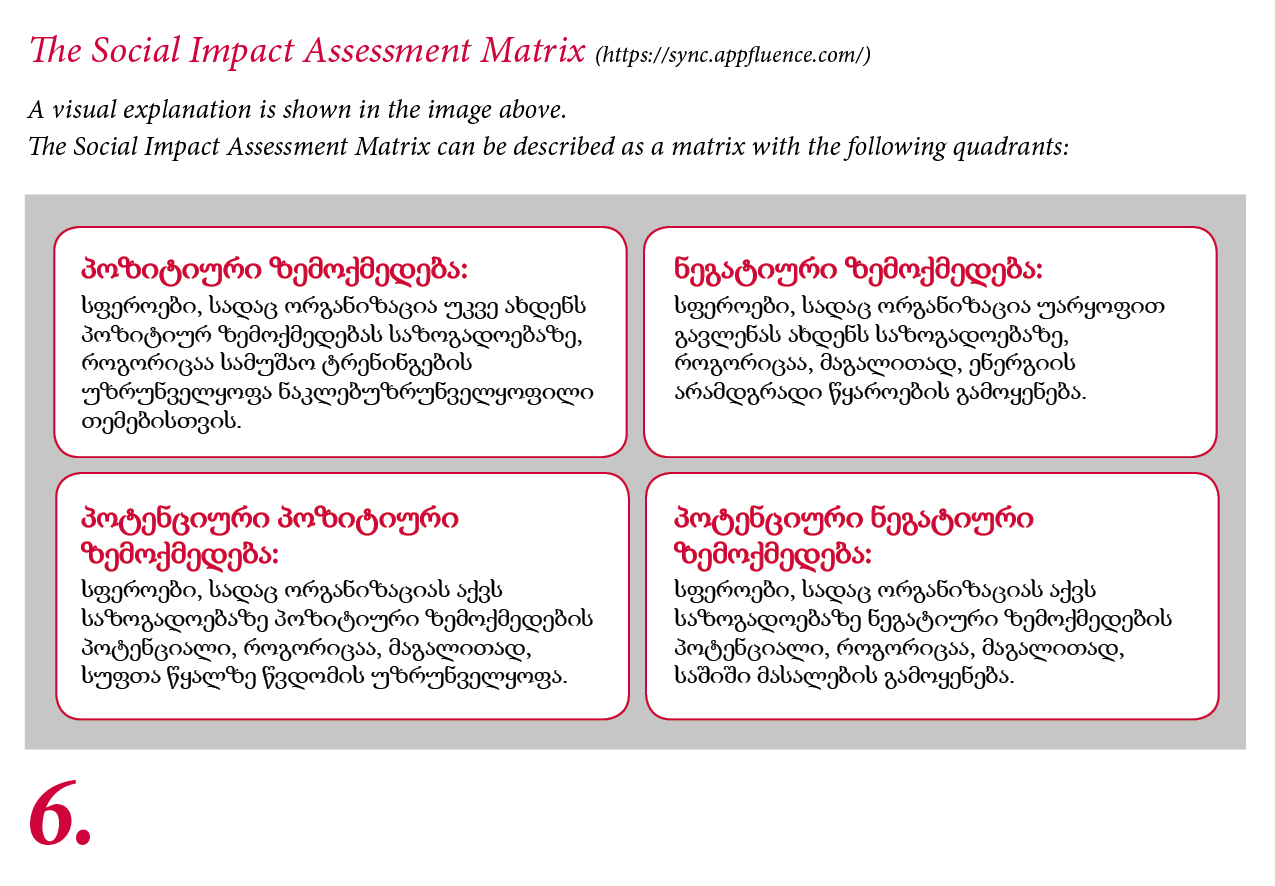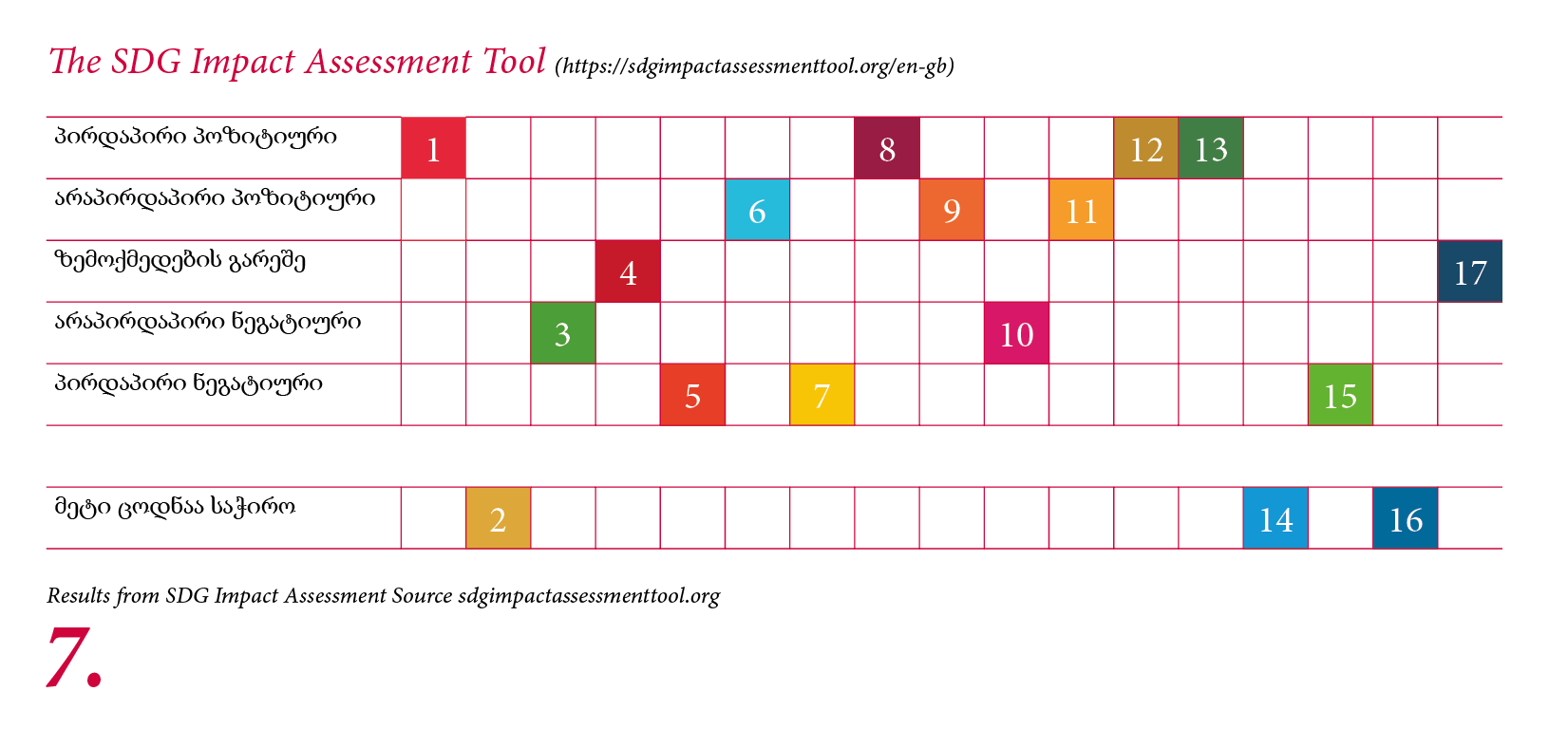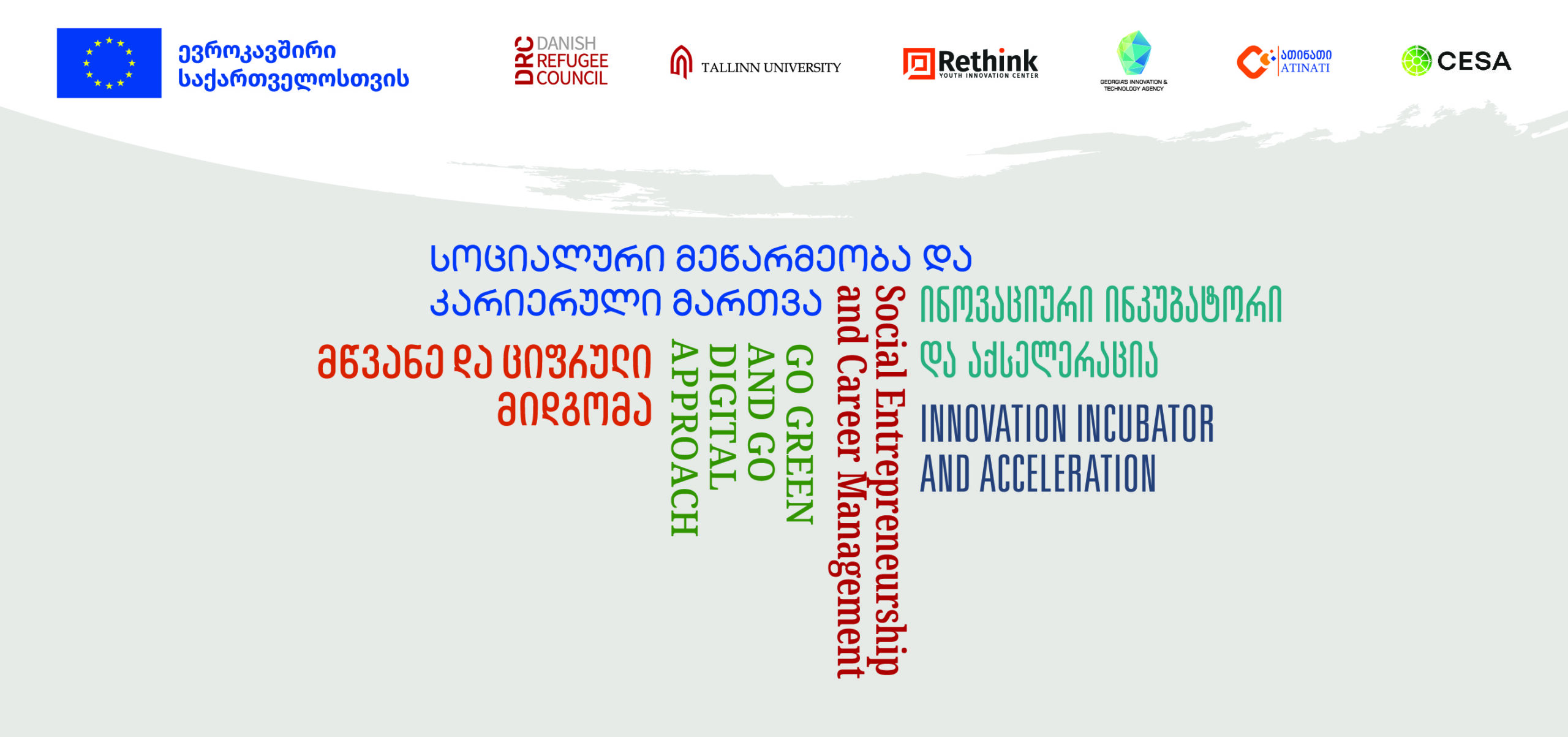მოდული 5, „შეფასება და ზემოქმედების გაზომვა“, შექმნილია საჭირო ცოდნითა და უნარებით მწვრთნელების აღჭურვისთვის მათი სასწავლო პროგრამების ეფექტურობისა და სოციალური საწარმოების ზემოქმედების შესაფასებლად. ეს მოდული ისეთ მეთოდოლოგიებსა და ინსტრუმენტებს განიხილავს, რომლებიც საფუძვლიანი შეფასებებისა და ზემოქმედების ანალიზის ჩასატარებლადაა საჭიროა, რაც იმას უზრუნველყოფს, რომ სოციალური საწარმოები არა მხოლოდ მიაღწევენ თავიანთ მიზნებს, არამედ პოზიტიურ წვლილსაც შეიტანენ საზოგადოებაში.
1. ზემოქმედების გაზომვის ხელსაწყოები და მეთოდები
ზემოქმედების გაზომვა ინკუბაციურ პროგრამებში
ინკუბაციური პროგრამისა და სოციალური საწარმოების ზემოქმედების გაზომვა გადამწყვეტია მათი ეფექტურობის გასაგებად და მომავალი გაუმჯობესებისთვის ინფორმირებული გადაწყვეტილებების მისაღებად. ერთი და იგივე მეთოდოლოგია შეიძლება ხშირად ორივე კონტექსტში გამოიყენებოდეს, რაც საშუალებას აძლევს მწვრთნელებს, ასწავლონ ეს მეთოდები მონაწილეებს და გამოიყენონ ისინი სასწავლო პროგრამის წარმატების შესაფასებლად.
1.1 ზემოქმედების გაზომვის საკვანძო ელემენტები
განსაზღვრეთ მკაფიო მიზნები და შედეგები: მკაფიოდ განსაზღვრეთ როგორი უნდა იყოს წარმატება როგორც ინკუბაციური პროგრამის, ასევე იმ სოციალური საწარმოებისთვის, რომლებსაც ის ზრდის. განსაზღვრეთ კონკრეტული, გაზომვადი, მიღწევადი, შესაბამისი და დროში შეზღუდული (SMART) მიზნები და შედეგები.
შეიმუშავეთ ცვლილებების თეორია: მოხაზეთ ცვლილებების ყოვლისმომცველი თეორია (ToC), რომელიც ასახავს მიზეზ-შედეგობრივ გზას ქმედებებიდან განზრახულ სოციალურ ზემოქმედებამდე. ამ მოდელმა უნდა აჩვენოს, თუ როგორ მიდის პროგრამის საქმიანობა გარკვეულ შედეგებამდე და, საბოლოოდ, საზოგადოებაში ან სექტორში სასურველ ცვლილებებამდე თუ შედეგებამდე.
აირჩიეთ შესაბამისი მეტრიკა და ინდიკატორები: განსაზღვრეთ ეფექტურობის ძირითადი ინდიკატორები (KPI), რომლებიც პროგრესისა და გავლენის შესაფასებლად იქნება გამოყენებული. ეს უშუალოდ უნდა უკავშირდებოდეს მიზნებსა და შედეგებს, რომლებიც ასახულია ToC-ში და შეიძლება მოიცავდეს როგორც ხარისხობრივ, ასევე რაოდენობრივ მაჩვენებლებს.
მონაცემთა შეგროვებისთვის შერეული მეთოდები გამოიყენეთ: ზემოქმედების ყოვლისმომცველი მტკიცებულებების შესაგროვებლად რაოდენობრივი (გამოკითხვები, მონაცემთა ანალიტიკა) და ხარისხობრივი (ინტერვიუები, ფოკუს ჯგუფები, ქეისები) მეთოდების ერთობლიობა გამოიყენეთ. ეს შერეულ მეთოდთა მიდგომა პროგრამის ეფექტების უფრო დეტალურ გაგებას უზრუნველყოფს.
განახორციელეთ რეგულარული მონიტორინგი და შეფასება (M&E): ჩამოაყალიბეთ M&E ჩარჩო, რომელიც მონაცემთა რეგულარულ შეგროვებას, მიზნების მიღწევის პროგრესის მონიტორინგსა და ზოგადი ზემოქმედების შესაფასებლად პერიოდულ შეფასებებს მოიცავს. ეს უნდა იყოს მუდმივი პროცესი, რომელიც რეალურ დროში კორექტირებისა და გაუმჯობესების საშუალებას იძლევა.
სოციალური მოგება ინვესტიციიდან (SROI): გამოთვალეთ სოციალური მოგება ინვესტიციიდან, რათა რაოდენობრივად შეფასდეს პროგრამის ან საწარმოს მიერ შექმნილი სოციალური, გარემოსდაცვითი და ეკონომიკური ღირებულება. SROI უზრუნველყოფს სარგებლის ფარდობას ხარჯებთან და შექმნილი ღირებულების დამაჯერებელ ნარატივს გთავაზობთ.
უკუკავშირის ციკლები და უწყვეტი გაუმჯობესება: შეიმუშავეთ მექანიზმები ყველა დაინტერესებული მხარის, მათ შორის, პროგრამის მონაწილეების, ბენეფიციარებისა და პარტნიორების უკუკავშირის მისაღებად. ეს უკუკავშირი პროგრამისა და დროთა განმავლობაში მისი ზემოქმედების დასაზუსტებლად და გასაუმჯობესებლად გამოიყენეთ.
ანგარიშგება და კომუნიკაცია: მოამზადეთ ზემოქმედების ანგარიშები, რომლებიც გამჭვირვალედ გადმოსცემს ზემოქმედების გაზომვის ძალისხმევის შედეგებს. პროგრამის მიღწევების დემონსტრირებისთვის და მხარდაჭერისა და დაფინანსების მოსაზიდად ეს ანგარიშები დაინტერესებულ მხარეებს უნდა გაუზიარდეს.
სოციალური მეწარმეობის ინკუბაციის ტრენინგში ამ ხელსაწყოებისა და მეთოდების ინტეგრირებით მწვრთნელებს შეუძლიათ, აღჭურვონ მონაწილეები საკუთარი საწარმოების ზემოქმედების გაზომვისა და ფორმულირებისთვის საჭირო უნარებით. ამის გარდა, იმავე მეთოდოლოგიების გამოყენება თვით ინკუბაციური პროგრამის შესაფასებლად უზრუნველყოფს ზემოქმედების გაზომვისადმი თანმიმდევრულ მიდგომას და აძლიერებს სწავლებას პრაქტიკული გამოყენების გზით.
2. უკუკავშირის შეგროვება და ანალიზი უწყვეტი გაუმჯობესებისთვის
უკუკავშირის შეგროვება და ანალიზი გადამწყვეტია სასწავლო პროგრამების ეფექტურობის შესაფასებლად და მუდმივი გაუმჯობესების სფეროების იდენტიფიცირებისთვის. ქცემოთ მოცემულია უკუკავშირის შეგროვებისა და შეფასების ორი მარტივი, მაგრამ კონკრეტული ინსტრუმენტი:
2.1 გამოკითხვები და კითხვარები
ხელსაწყოს აღწერა: გამოკითხვები და კითხვარები ისეთი სტრუქტურირებული ხელსაწყოებია, რომლებსაც მონაწილეებისგან რაოდენობრივი და ხარისხობრივი მონაცემების შეგროვება შეუძლია. ისინი შეიძლება შემუშავდეს კმაყოფილების, სწავლის შედეგებისა და ტრენინგის შემდგომი უნარების გამოყენების შესაფასებლად.
განხორციელება:
- შეიმუშავეთ კითხვები, რომლებიც კონკრეტული, მკაფიო და შესაბამისია ტრენინგის მიზნებთან მიმართებით. ყოვლისმომცველი ინფორმაციის მოსაგროვებლად დახურული (მაგ., ლაიკერტის სკალის კითხვები) და ღია კითხვების ნაზავი ჩართეთ.
- ონლაინ გამოკითხვის ისეთი ინსტრუმენტები გამოიყენეთ, როგორებიცაა Google Forms ან SurveyMonkey, რათა ხელი შეუწყოთ პასუხების განაწილებისა და შეგროვების გამარტივებას.
ანალიზი:
- რაოდენობრივი მონაცემები შეიძლება გაანალიზდეს სტატისტიკური ინსტრუმენტების გამოყენებით, რის მიზანსაც ტენდენციებისა და შაბლონების დადგენა წარმოადგენს.
- ხარისხობრივი პასუხები შეიძლება თემატურად კლასიფიცირდეს და გაანალიზდეს მონაწილეთა აღქმისა და გამოცდილების გასაგებად.
იხილეთ მარტივი უკუკავშირის ფურცლის მაგალითი აქ. ეს გამოკითხვა მიზნად ისახავს ყოვლისმომცველი უკუკავშირის შეგროვებას სასწავლო პროგრამის სხვადასხვა ასპექტზე, შინაარსის აქტუალურობიდან და მიწოდებიდან სასწავლო გარემომდე და პრაქტიკულ გამოყენებამდე. პასუხების ანალიზი ხელს შეუწყობს ძლიერი მხარეებისა და გაუმჯობესების სფეროების იდენტიფიცირებას, რაც წვლილს შეიტანს ტრენინგის გამოცდილების უწყვეტ გაუმჯობესებაში.
2.2 უკუკავშირის სემინარები
ხელსაწყოს აღწერა: უკუკავშირის სემინარები მოიცავს ინტერაქტიულ სესიებს, სადაც მონაწილეებს სთავაზობენ, დაფიქრდნენ და განიხილონ ტრენინგის გამოცდილება. ეს მეთოდი ხელს უწყობს სიღრმისეულ გაგებას და ნიუანსურ უკუკავშირს აგროვებს.
განხორციელება:
- ტრენინგის შემდეგ მოაწყვეთ სესია, რომელშიც მონაწილეები თავიანთი შეხედულებების სტრუქტურირებულად გაზიარებას შეძლებენ. დისკუსიის წარმართვისთვის გამოიყენეთ ფასილიტაციის ისეთი მეთოდები, როგორებიცაა წრიული გამოკითხვა ან SWOT ანალიზი (ძლიერი მხარეები, სუსტი მხარეები, შესაძლებლობები, საფრთხეები).
- უზრუნველყავით უსაფრთხო გარემო, სადაც ყველა მონაწილე თავს კომფორტულად იგრძნობს და ღიად და გულწრფელად ისაუბრებს.
ანალიზი: ის განხილვები და საკვანძო საკითხები დააფიქსირეთ, რომლებიც სემინარის დროს წამოიჭრა. გააანალიზეთ უკუკავშირი, რათა გაუმჯობესებისთვის საერთო თემები, შეხედულებები და წინადადებები გამოავლინოთ.
ეს უკუკავშირის ხელსაწყოები ორმაგ მიზანს ემსახურება: ისინი იძლევა მყისიერ წარმოდგენას სასწავლო პროგრამის ეფექტურობის შესახებ და ხელს უწყობს უწყვეტი სწავლისა და გაუმჯობესების კულტურას. უკუკავშირის რეგულარული შეგროვებითა და ანალიზით მწვრთნელებს თავიანთი პროგრამების ადაპტირება და დახვეწა შეუძლიათ, რათა უკეთ დააკმაყოფილონ მონაწილეთა მოთხოვნილებები და მოლოდინები, რაც, საბოლოოდ, მათი ტრენინგის ინიციატივების საერთო ზემოქმედებას გაზრდის.
3. სოციალური ზემოქმედების გაზომვა სოციალურ მეწარმეობაში
სოციალური ზემოქმედება არის სოციალური და გარემოსდაცვითი ცვლილებები, რომლებსაც სოციალური საწარმოების საქმიანობა და პროგრამები ქმნის.
სოციალური ზემოქმედება ისეთ საკითხებს მოიცავს, როგორებიცაა თანასწორობა, საარსებო წყარო, ჯანმრთელობა, კვება, სიღარიბე, უსაფრთხოება, სამართლიანობა და ა.შ.
გარემოზე ზემოქმედება ისეთ საკითხებს მოიცავს, როგორებიცაა კონსერვაცია, ენერგომოხმარება, ნარჩენები, გარემოს ჯანმრთელობა, რესურსების ამოწურვა, კლიმატის ცვლილება და ა.შ.
სოციალური ზემოქმედება გულისხმობს დადებით ან უარყოფით ეფექტს, რომელიც სოციალური საწარმოს ქმედებებს ინდივიდებზე, თემებსა და ფართო საზოგადოებაზე აქვს. სოციალური ზემოქმედება შეიძლება სხვადასხვა დონეზე გამოვლინდეს, ინდივიდუალური ბენეფიციარიდან მთელ თემებამდე. სოციალური ზემოქმედების გაზომვა მნიშვნელოვანია სოციალური საწარმოს სოციალური წვლილის გაგებისა და ოპტიმიზაციისთვის.
სოციალური საწარმოები განსხვავდება ზომით, სიმძლავრით, აქტივობებითა და ფოკუსირებით და, შესაბამისად, არ არსებობს ერთიანი გასაზომი ხელსაწყო, რომელიც ყველასთვის შესაფერისი იქნება. სოციალური საწარმოებისთვის სოციალური ზემოქმედების გაზომვის მრავალი ხელსაწყოა ხელმისაწვდომი, დაწყებული მარტივიდან უფრო ყოვლისმომცველ ჩარჩოებამდე. ხელსაწყოები განსხვავდება სირთულის, მასშტაბისა და დანიშნულების მიხედვით, ამიტომ სოციალურმა საწარმოებმა ყველაზე შესაფერისი ხელსაწყო უნდა აირჩიოს თავისი სპეციფიკური საჭიროებებიდან, შესაძლებლობებიდან და მიზნებიდან გამომდინარე. ასევე მნიშვნელოვანია გაზომვის პროცესში დაინტერესებული მხარეების ჩართვა.
ზოგიერთი ხშირად გამოყენებული ინსტრუმენტია:
ცვლილებების თეორია: ცვლილებების თეორია არის სტრატეგიული მიდგომა, რომელიც ორგანიზაციებს იმის გაგებაში ეხმარება, თუ როგორ უნდა გაზომონ სოციალური ზემოქმედება გრძელვადიანი მიზნების მისაღწევად საჭირო ნაბიჯებისა და ინტერვენციების განსაზღვრით.
ის ორგანიზაციებს აწვდის საგზაო რუკას, რომელსაც ისინი უნდა მიჰყვნენ და ემსახურება საყრდენის სახით სოციალური ზემოქმედების გაზომვის შესაბამისი ხელსაწყოებისა და მეთოდების არჩევისთვის. ის აღწერს მიზეზ-შედეგოობრივ კავშირებს, რომელთა საშუალებითაც სოციალური საწარმოს საქმიანობა სასურველ შედეგებსა და ზემოქმედებას აღწევს. ის გვეხმარება ვარაუდების გამორკვევასა და ინდიკატორების განსაზღვრაში (https://www.sopact.com/guides/theory-of-change).
ლოგიკური მოდელები: ლოგიკური მოდელები სოციალური ზემოქმედების გაზომვის მძლავრი ხელსაწყოებია, რომლებიც ახორციელებს ურთიერთობების ილუსტრირებას შემდეგებს შორის:
- შემავალი მონაცემები,
- აქტივობები,
- გამომავალი მონაცემები,
- შედეგები და
- ზემოქმედება.
ისინი ეხმარება ორგანიზაციებს იმის გაგებაში, თუ როგორ უნდა გაიზომოს სოციალური ზემოქმედება საკვანძო კომპონენტებისა და შესაბამისი ინდიკატორების იდენტიფიცირებით. ორგანიზაციის ლოგიკური მოდელი აღწერს მის გამიზნულ ზემოქმედებას ისევე, როგორც ინტერვენციას, რომელიც ორგანიზაციამ აირჩია ამ გამიზნული ზემოქმედების მისაღწევად. (https://medium.com/@Ecotone_PBC/designing-your-impact-logic-models-for-entrepreneurs-and-investors-17528caa3b0f)
სოციალური მოგება ინვესტიციიდან (SROI): SROI არის სოციალური ზემოქმედების გაზომვის ერთ-ერთი ყველაზე ყოვლისმომცველი მეთოდი. ის ანგარიშობს სოციალური შედეგების ღირებულებას ფულადი გამოსახულებით ამ შედეგების მისაღწევად განხორციელებულ ინვესტიციებთან შედარებით. SROI სოციალური ზემოქმედების შეფასების ხელსაწყოები ეხმარება ორგანიზაციებს, გაიგონ თავისი გავლენის ფინანსური ღირებულება და მიაწოდონ ის დაინტერესებულ მხარეებს.
SROI არის ღირებულების ფართო კონცეფციის გაზომვისა და კომუნიკაციის მეთოდი, რომელიც სოციალურ, ეკოლოგიურ და ეკონომიკურ ზემოქმედებას აერთიანებს. ეს არის თქვენი საქმიანობით შექმნილი ღირებულებისა და იმ წვლილის აღრიცხვის საშუალება, რომელმაც შესაძლებელი გახადა ეს საქმიანობა. ეს არის ასევე თქვენი საქმიანობით გამოწვეული ცვლილებების ისტორია, რომელიც თქვენი დაინტერესებული მხარეების პერსპექტივიდანაა მოთხრობილი. SROI ცვლილებას იმ საშუალებებით ზომავს, რომლებიც იმ ადამიანებს ან ორგანიზაციებს ეხება, რომლებიც განიცდიან მას ან წვლილი შეაქვთ მასში და შეიძლება მოიცავდეს ყველა სახის შედეგს – სოციალურს, ეკონომიკურსა და ეკოლოგიურს – მაგრამ იმის განსაზღვრისთვის, თუ რომელი შედეგია რელევანტური, ის დაინტერესებული მხარეების ჩართულობას ეფუძნება. არსებობს ორი სახის SROI:
- შეფასებითი SROI რეტროსპექტულად ტარდება და უკვე არსებულ შედეგებს ეფუძნება.
- საპროგნოზო SROI-ები პროგნოზირებს, თუ როგორი სოციალური ღირებულება შეიქმნება, თუ აქტივობები სავარაუდო შედეგებს დააკმაყოფილებს.
SROI იმას გვატყობინებს, თუ როგორ იქმნება ცვლილებები სოციალური, გარემოსდაცვითი და ეკონომიკური შედეგების გაზომვით და მათ წარმოსადგენად ფულად ღირებულებებს იყენებს. ეს საშუალებას იძლევა გამოითვალოს სარგებლისა და ხარჯების თანაფარდობა. მაგალითად, 3:1 თანაფარდობა მიუთითებს, რომ 1 (£/€) ინვესტიცია მოიტანს 3 (£/€) სოციალურ ღირებულებას.
მეტი ინფორმაცია: სოციალური ღირებულების ბიბლიოთეკა „ინვესტიციიდან სოციალური მოგების გზამკვლევი“.
ამბების თხრობა და ნარატიული ანგარიშგება: გამოიყენეთ თხრობის ტექნიკა სოციალური საწარმოს ზემოქმედების დამაჯერებლად და ხელმისაწვდომად გადასაცემად. ნარატიულ ანგარიშგებას შეუძლია დაინტერესებული მხარეების ჩართვა და ორგანიზაციის მუშაობის ადამიანური მხარის დემონსტრირება.
ონლაინ ხელსაწყოები და პლატფორმები: ისეთი ონლაინ ხელასწყოები და პლატფორმები გამოიყენეთ, რომლებიც სპეციალურადაა შექმნილი სოციალური ზემოქმედების გაზომვისთვის, მაგალითად, IRIS (ზემოქმედების ანგარიშგება და საინვესტიციო სტანდარტები) ან B ზემოქმედების შეფასებაt (https://www.bcorporation.net/en-us/programs-and-tools/b-impact-assessment/). ეს ხელსაწყოები ხშირად სთავაზობს ჩარჩოებს, შაბლონებსა და სახელმძღვანელოებს გაზომვის პროცესის გასამარტივებლად.
4. სოციალური ზემოქმედების გაზომვის სისტემა სოციალურ საწარმოში
სოციალური საწარმოსთვის სოციალური ზემოქმედების გაზომვის სისტემის შემუშავება რამდენიმე ძირითად საფეხურს მოიცავს. აქ არის ყოვლისმომცველი სახელმძღვანელო, თუ როგორ უნდა გაკეთდეს ეს:
განსაზღვრეთ მიზნები და შედეგები: მკაფიოდ განსაზღვრეთ სოციალური საწარმოს სოციალური მისია, მიზნები და ამოცანები. განახორციელეთ მიზნობრივი სოციალური შედეგებისა და იმ ზემოქმედების იდენტიფიცირება, რომლის მიღწევასაც ორგანიზაცია ცდილობს.
დაინტერესებული მხარეების იდენტიფიცირება: განსაზღვრეთ და ჩართეთ ძირითადი დაინტერესებული მხარეები, რომლებიც გავლენას ახდენენ ან აქვთ ინტერესი სოციალური საწარმოს საქმიანობაში. მათ შორის შეიძლება იყვნენ ბენეფიციარები, კლიენტები, თანამშრომლები, დონორები, ინვესტორები, სამთავრობო უწყებები და საზოგადოების წევრები.
აირჩიეთ გაზომვის ჩარჩოები და ხელსაწყოები: სოციალური ზემოქმედების შესაფასებლად გაზომვის შესაბამისი ჩარჩოები და ხელსაწყოები აირჩიეთ. ეს შეიძლება ისეთ მეთოდოლოგიას მოიცავდეს, როგორიცაა სოციალური მოგება ინვესტიციიდან (SROI), ცვლილების თეორია (ToC), ლოგიკური მოდელები, B ზემოქმედების შეფასება ან სოციალური საწარმოს კონკრეტულ კონტექსტსა და მიზნებზე მორგებული სხვა მიდგომები.
შეიმუშავეთ ცვლილების თეორია (ToC): შეიმუშავეთ ცვლილების თეორია (ToC), რომელიც ასახავს მიზეზ-შედეგობრივ კავშირებს, რომლებითაც სოციალური საწარმოს საქმიანობა სასურველ სოციალურ შედეგებსა და ზემოქმედებას იწვევს. ToC დაშვებების გარკვევაში, ძირითადი ინდიკატორების იდენტიფიცირებასა და გაზომვის სტრატეგიების შემუშავებაში გვეხმარება.
განსაზღვრეთ ინდიკატორები: სოციალური საწარმოს მიზნების, ამოცანებისა და ცვლილების თეორიის საფუძველზე სოციალური ზემოქმედების გაზომვის შესაბამისი ინდიკატორები განსაზღვრეთ. ინდიკატორები უნდა იყოს სპეციფიკური, გაზომვადი, მიღწევადი, შესაბამისი და დროში შეზღუდული (SMART) და მათ ზემოქმედების როგორც რაოდენობრივი, ისე ხარისხობრივი ასპექტები უნდა ასახოს.
მონაცემების შეგროვების მეთოდების შემუშავება: შეიმუშავეთ მონაცემთა შეგროვების მეთოდები, რათა იდენტიფიცირებული ინდიკატორების მიხედვით მონაცემები შეაგროვოთ. ეს შეიძლება მოიცავდეს გამოკითხვებს, გასაუბრებებს, ფოკუს ჯგუფებს, დაკვირვებებს, ქეისებს და მონაცემთა მეორეულ წყაროებს. ჩართეთ დაინტერესებული მხარეები მონაცემთა შეგროვების პროცესში, რათა მათი პერსპექტივების გათვალისწინება უზრუნველყოთ.
მონაცემთა შეგროვება: შეაგროვეთ მონაცემები გამოვლენილი ინდიკატორების მიხედვით და მონაცემთა შეგროვების შემუშავებული მეთოდების გამოყენებით. უზრუნველყავით მონაცემთა ხარისხი მონაცემთა შეგროვების მკაცრი პროტოკოლების გამოყენებით, მონაცემთა შემგროვებლების ტრენინგებისა და მონაცემების ვალიდაციის ტრიანგულაციისა და გადამოწმების გზით.
მონაცემთა ანალიზი: გააანალიზეთ შეგროვებული მონაცემები სოციალური საწარმოს სოციალური ზემოქმედების შესაფასებლად. ეს გულისხმობს დასკვნების ინტერპრეტაციას, ტენდენციებისა და შაბლონების იდენტიფიცირებასა და შედეგების შედარებას საბაზისო მონაცემებთან ან შესაბამის საკონტროლო მაჩვენებლებთან.
შედეგების მიწოდება: სოციალური ზემოქმედების შეფასების დასკვნები შიდა და გარე დაინტერესებულ მხარეებს მკაფიოდ, გამჭვირვალედ და დამაჯერებლად მიაწოდეთ. სოციალური საწარმოს ზემოქმედების შესახებ ინფორმაციის გასავრცელებლად ისეთი განსხვავებული საკომუნიკაციო არხები გამოიყენეთ, როგორებიცაა ანგარიშგება, პრეზენტაციები, ინფოგრაფიკა და ამბის თხრობა.
გაუმჯობესება: გადაწყვეტილების მიღების, პროგრამის დიზაინისა და განხორციელების გასაუმჯობესებლად და სოციალურ საწარმოში უწყვეტი სწავლისა და გაუმჯობესების შესახებ ინფორმირებისთვის ზემოქმედების შეფასების შედეგები გამოიყენეთ. გაიმეორეთ გაზომვის პროცესი დროთა განმავლობაში, რათა თვალყური ადევნოთ პროგრესს, განახორციელოთ სტრატეგიების ადაპტირება და გააძლიეროთ ზემოქმედება.
ამ ნაბიჯების გადადგმით სოციალური საწარმოები შეძლებენ სოციალური ზემოქმედების გაზომვის ძლიერი სისტემის შემუშავებას, რომელიც საშუალებას მისცემს მათ, სისტემატურად გაზომონ, შეაფასონ და გაავრცელონ თავიანთი სოციალური ზემოქმედება, რითიც პოზიტიური ცვლილებების შექმნისა და მდგრადი განვითარების ხელშეწყობის უნარს გააძლიერებენ.
4. სოციალური ზემოქმედების გაზომვის პრინციპები
არსებობს რამდენიმე ყოვლისმომცველი პრინციპი, რომლებიც, ჩვეულებრივ, სოციალური ზემოქმედების გაზომვის დროსაა ხაზგასმული. აქ არის რამდენიმე ძირითადი პრინციპი:
დაინტერესებული მხარეების ჩართვა და ჩართულობა: სოციალური ზემოქმედების გაზომვის მცდელობების შემუშავებაში, განხორციელებასა და შეფასებაში ისეთი დაინტერესებული მხარეები ჩართეთ, როგორებიც არიან ბენეფიციარები, კლიენტები, თანამშრომლები, დონორები, ინვესტორები, სამთავრობო უწყებები და საზოგადოების წევრები. უზრუნველყავით, რომ სხვადასხვა პერსპექტივები განიხილებოდეს და დაინტერესებულ მხარეებს ჰქონდეთ ხმის უფლება იმის განსაზღვრისას, თუ რა წარმოადგენს მნიშვნელოვან გავლენას.
გამჭვირვალობა და ანგარიშვალდებულება:უზრუნველყავით გამჭვირვალობა სოციალური ზემოქმედების გაზომვის აქტივობების მიზნებთან, ამოცანებთან, მეთოდებთან და შედეგებთან მიმართებით. მკაფიოდ აცნობეთ შეზღუდვები, გაურკვევლობები და დაშვებები, რომლებიც საფუძვლად უდევს გაზომვის პროცესს. უზრუნველყავით ანგარიშვალდებულება, რისთვისაც დაინტერესებულ მხარეებთან შედეგები გააზიარეთ და უკუკავშირი გამოიყენეთ პრაქტიკის გასაუმჯობესებლად.
ვალიდურობა და საიმედოობა: უზრუნველყავით, რომ სოციალური ზემოქმედების გაზომვის მეთოდები იყოს ვალიდური, რაც იმას ნიშნავს, რომ ისინი ზუსტად გაზომავს იმას, რისთვისაც არის განკუთვნილი, და სანდოა, რაც იმას ნიშნავს, რომ ისინი თანმიმდევრულ შედეგებს იძლევა დროთა განმავლობაში და სხვადასხვა კონტექსტში. ვალიდურობისა და სანდოობის გასაძლიერებლად შესაბამისი კვლევითი პროექტები, მონაცემთა შეგროვების მეთოდები და სტატისტიკური ტექნიკა გამოიყენეთ.
კონტექსტური მგრძნობელობა: გააცნობიერეთ კონტექსტის მნიშვნელობა სოციალური ზემოქმედების ფორმირებაში და მოარგეთ გაზომვის მიდგომები კონკრეტულ კულტურულ, სოციალურ, ეკონომიკურ და გარემოსდაცვით კონტექსტს, რომელშიც ინტერვენცია მოქმედებს. განახორციელეთ გაზომვის ხელსაწყოების, ინდიკატორებისა და მეთოდოლოგიების ადაპტირება სამიზნე პოპულაციისა და გარემოს უნიკალური საჭიროებებისა და მახასიათებლების ასახვისთვის.
ეთიკური მოსაზრებები: სოციალური ზემოქმედების გაზომვის პროცესში ეთიკური სტანდარტები დაიცავით. პატივი ეცით გაზომვაში ჩართული ინდივიდებისა და თემების უფლებებს, ღირსებასა და ავტონომიას. მონაწილეებისგან ინფორმირებული თანხმობა მიიღეთ, დაიცავით მათი კონფიდენციალურობა და მინიმუმამდე დაიყვანეთ ნებისმიერი პოტენციური ზიანი ან გაუთვალისწინებელი შედეგები.
უწყვეტი სწავლა და გაუმჯობესება: შეითვისეთ სწავლისა და სრულყოფის კულტურა სოციალური ზემოქმედების გაზომვის, როგორც სწავლების და არა უბრალოდ ანგარიშვალდებულების ხელსაწყოს სახით. რეგულარულად გადახედეთ და დაფიქრდით გაზომვის შედეგებზე, გამოავლინეთ მიღებული გაკვეთილები, საუკეთესო პრაქტიკა და სრულყოფის სფეროები და გამოიყენეთ მტკიცებულებები სტრატეგიების ადაპტირებისთვის, ინტერვენციების დახვეწისთვის და დროთა განმავლობაში ზემოქმედების გასაძლიერებლად.
გრძელვადიანი პერსპექტივა: გაითვალისწინეთ სოციალური ზემოქმედების გაზომვის გრძელვადიანი პერსპექტივა იმის აღიარებით, რომ მნიშვნელოვანი სოციალური ცვლილება ხშირად თანდათანობით და დროთა განმავლობაში ხდება. გაზომეთ როგორც მოკლევადიანი შედეგები, ასევე გრძელვადიანი ზემოქმედება ინტერვენციების მდგრადობისა და მასშტაბურობისა და მათი პოტენციალის გათვალისწინებით, რათა ხანგრძლივმოქმედი ცვლილებები შექმნათ.
სოციალური ზემოქმედების გაზომვის ამ პრინციპების დაცვით ორგანიზაციებს შეუძლიათ, გააძლიერონ თავიანთი გაზომვის მცდელობების სიმკაცრე, შესაბამისობა და ეთიკური მთლიანობა, საბოლოოდ გააუმჯობესონ პოზიტიური სოციალური ცვლილებების გატარების უნარი და შექმნან მნიშვნელოვანი გავლენა თემებში.


 Low Influence & Low Interest (Top Left):
Low Influence & Low Interest (Top Left):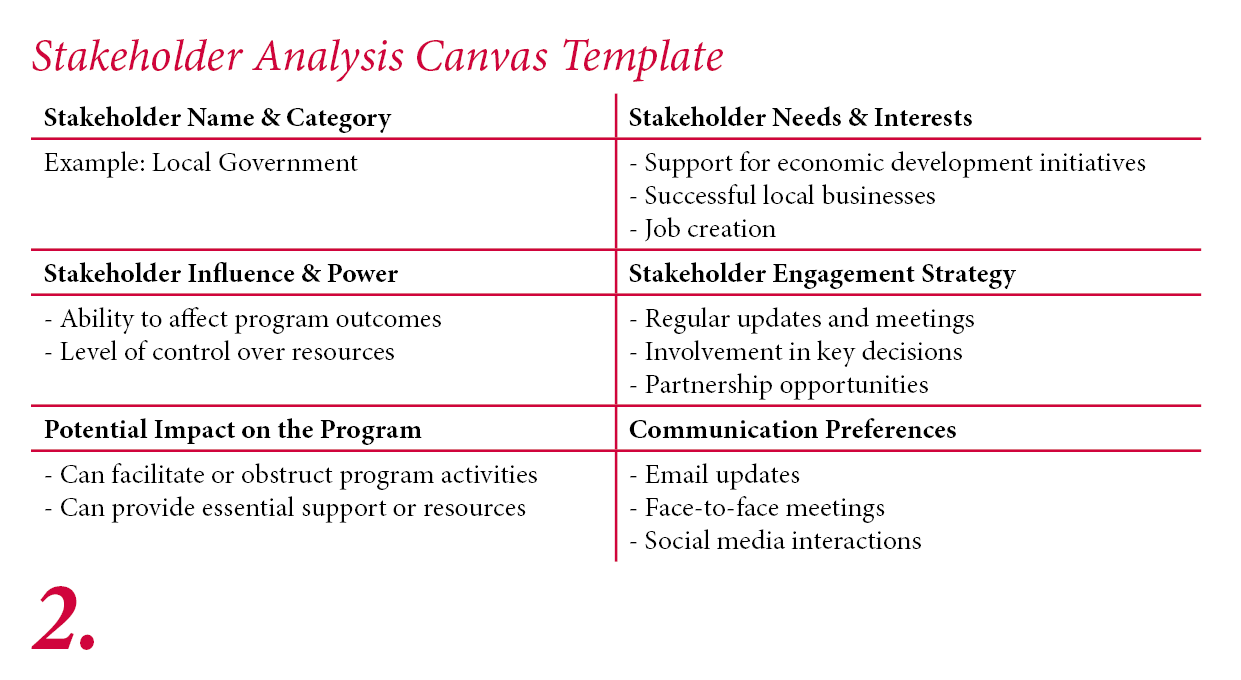
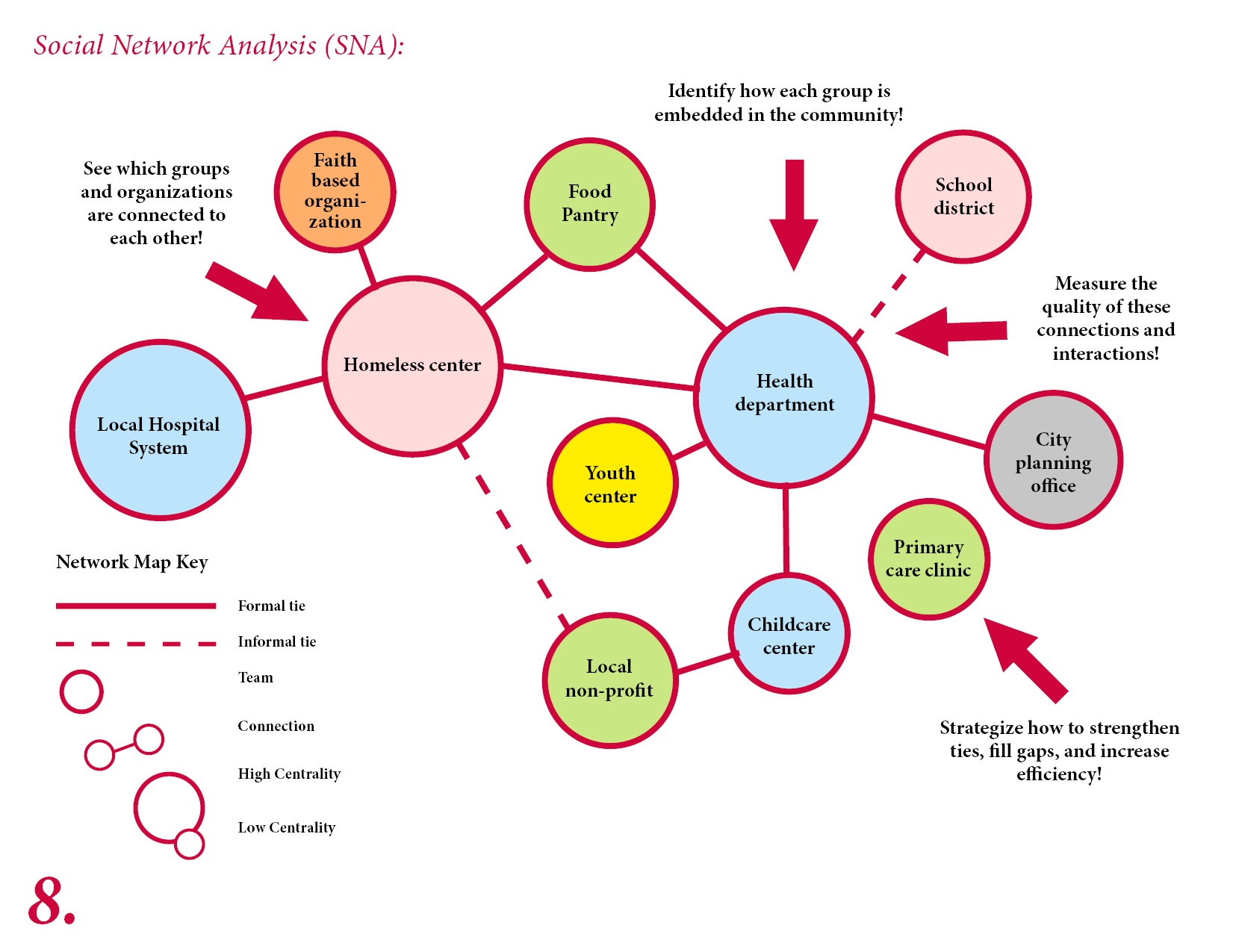

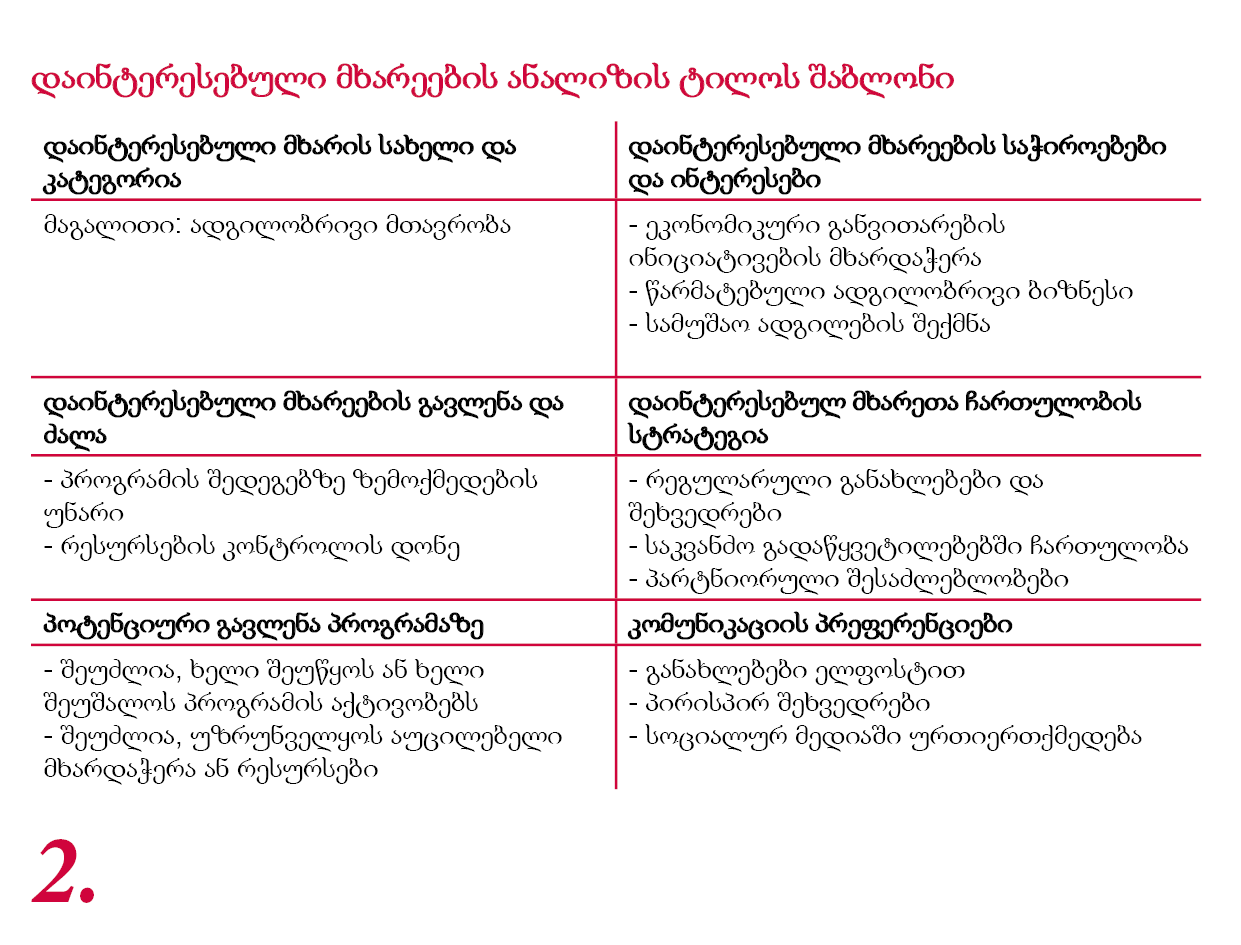
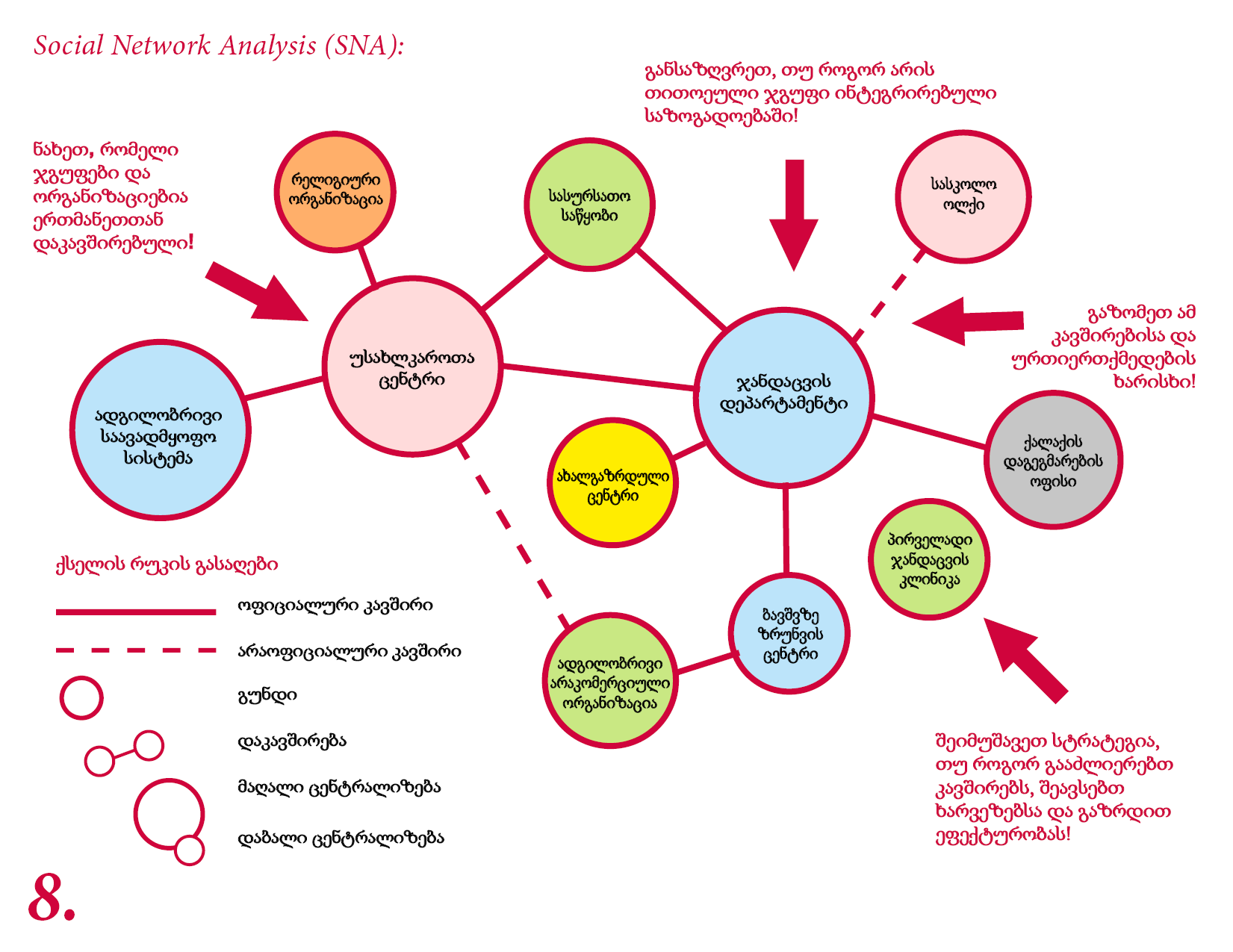
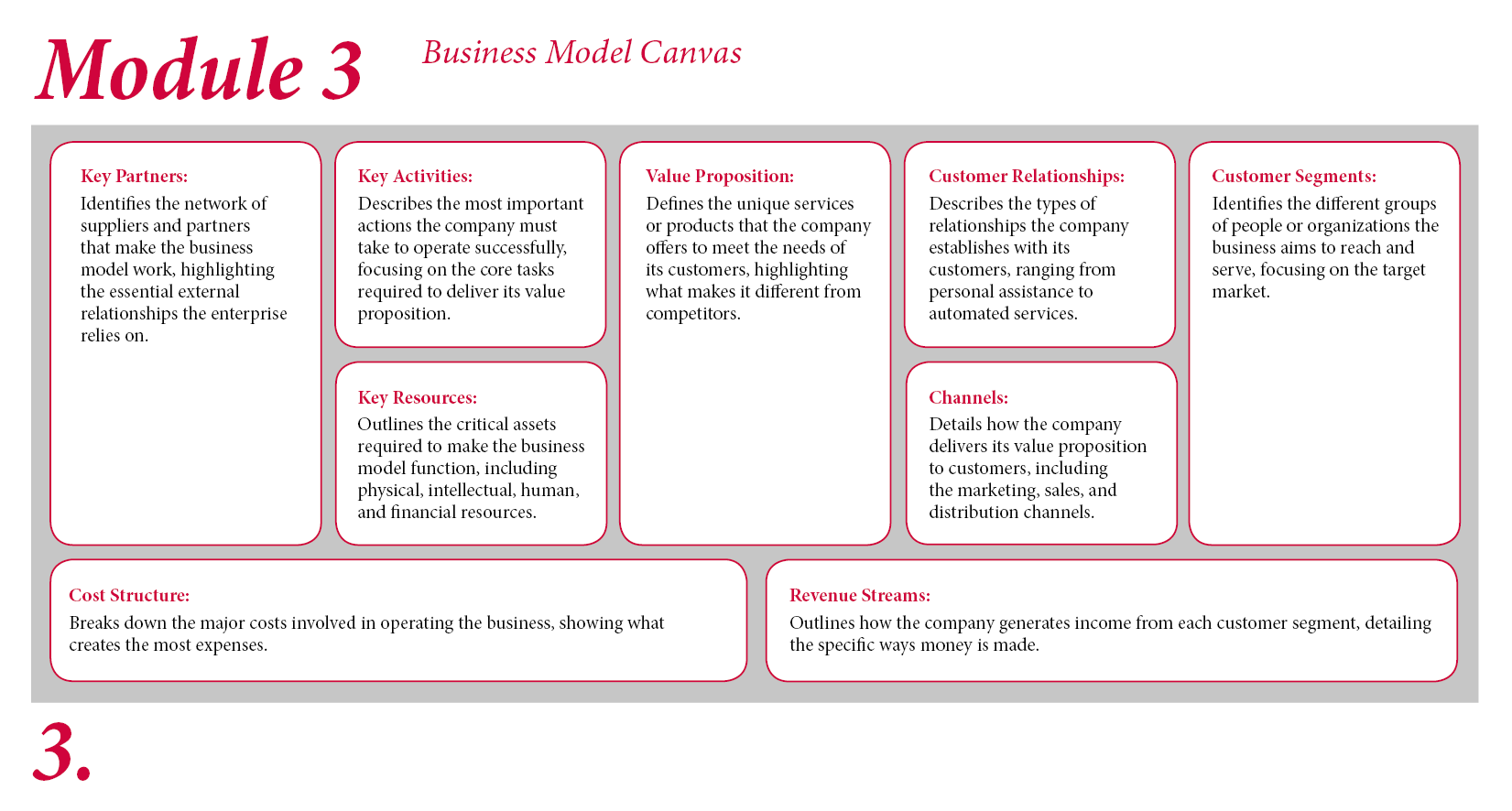
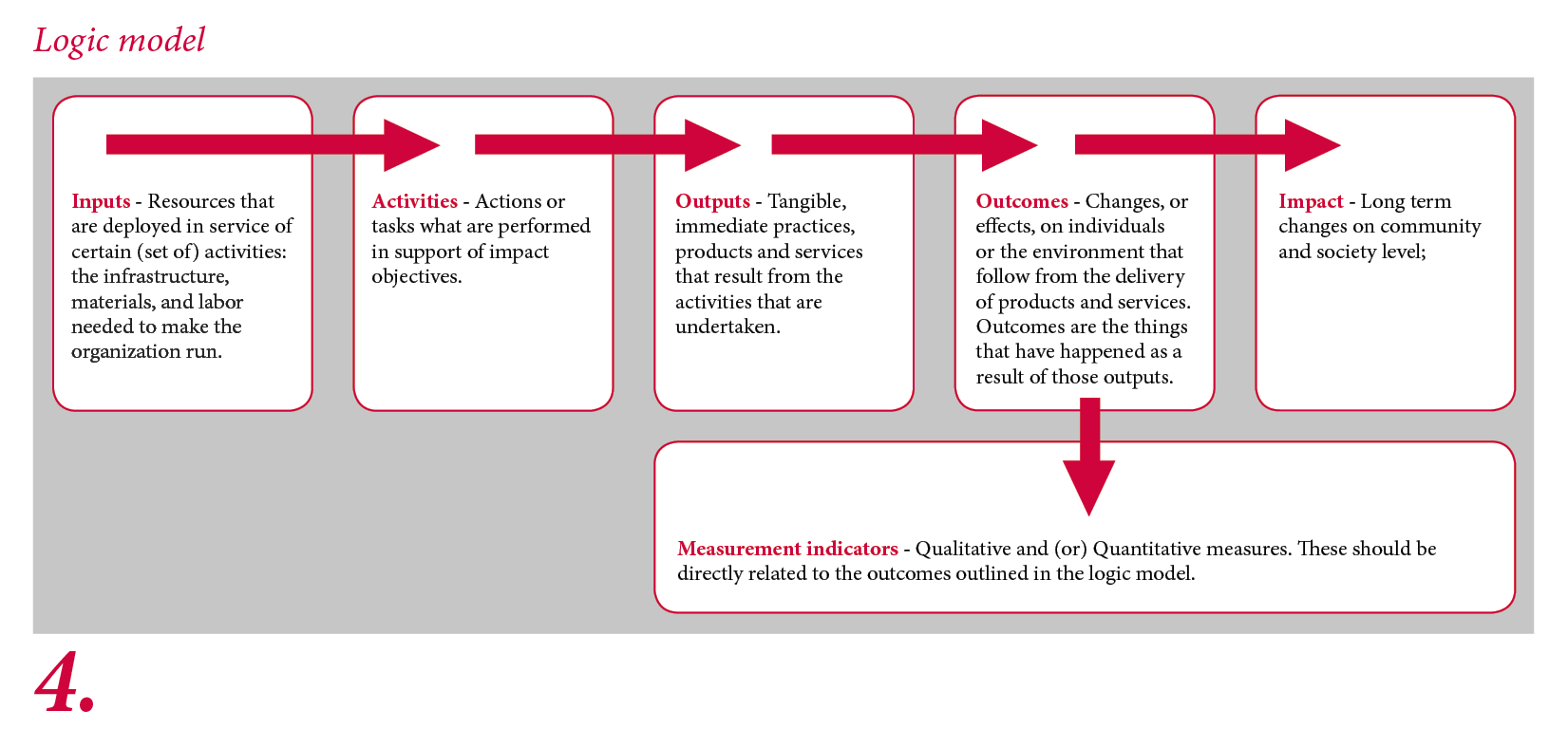

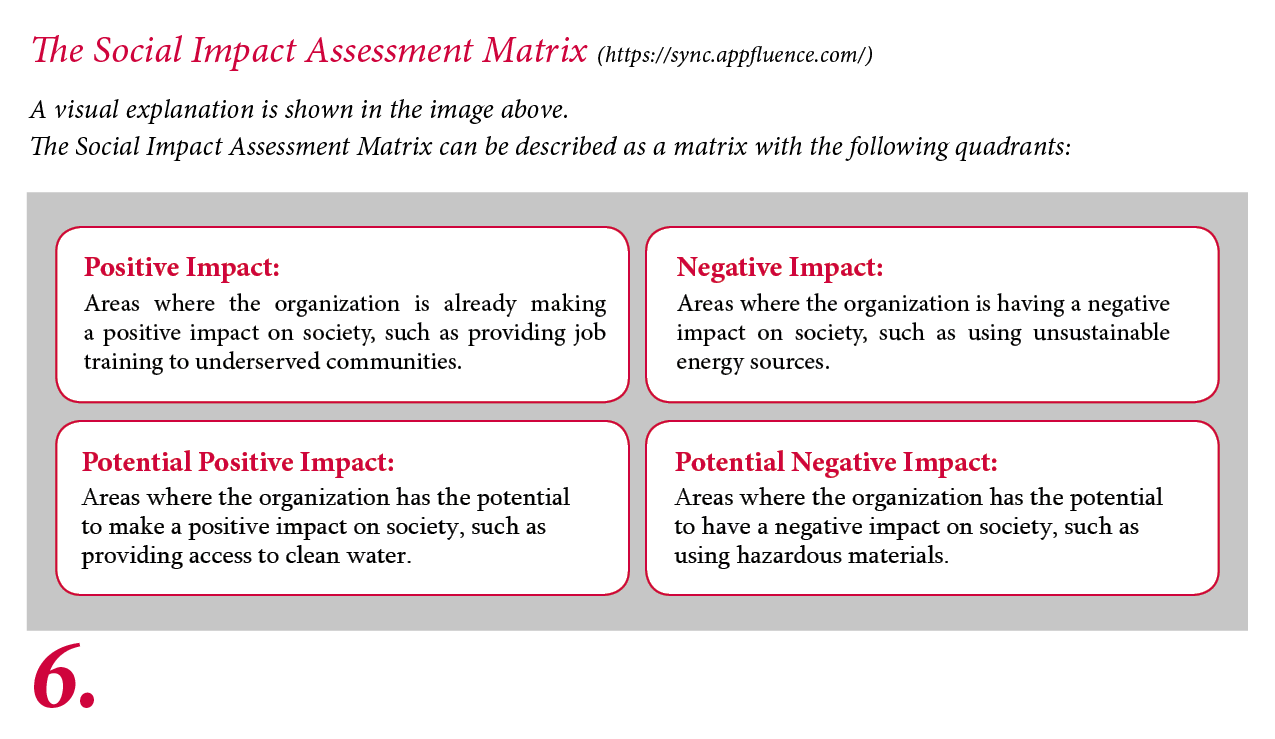
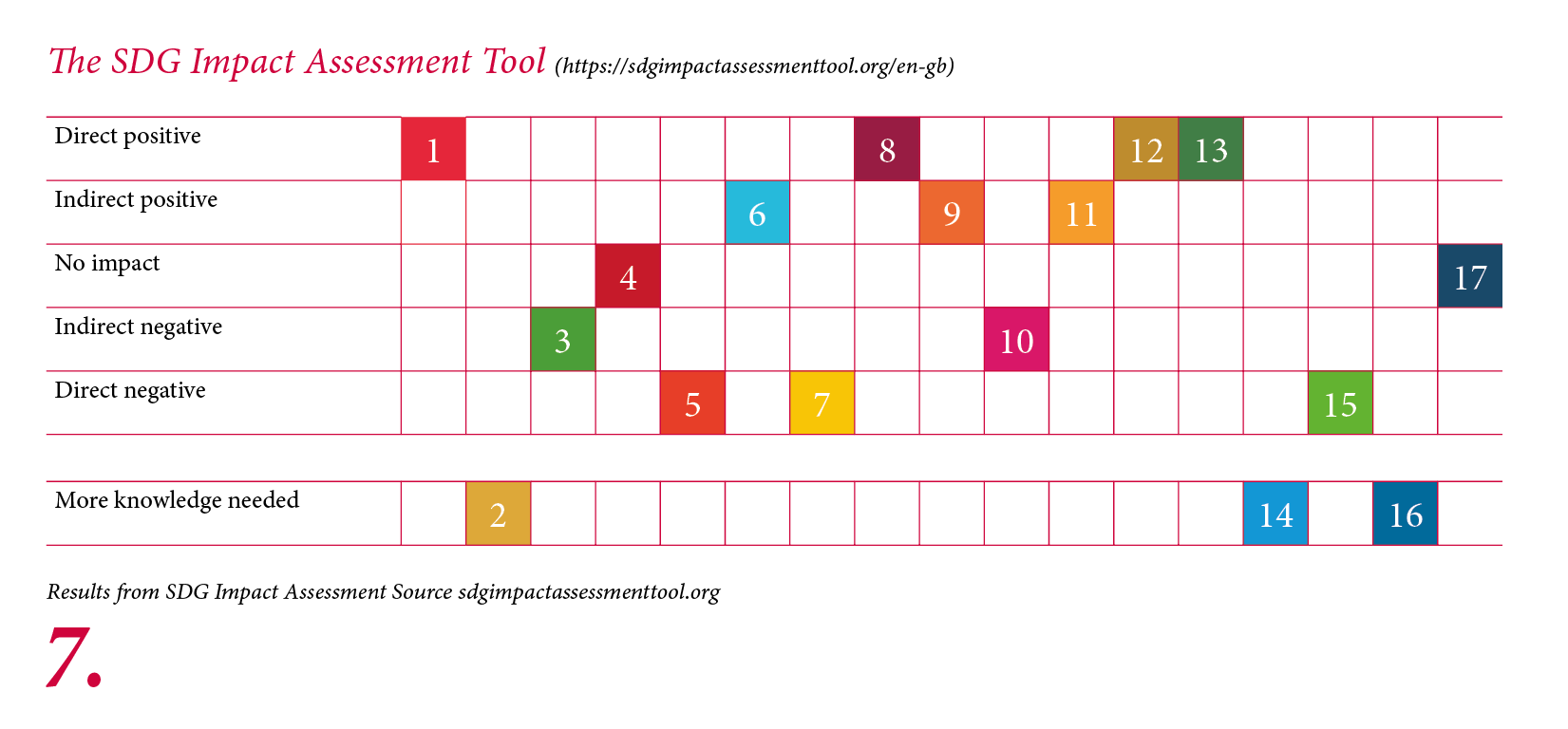
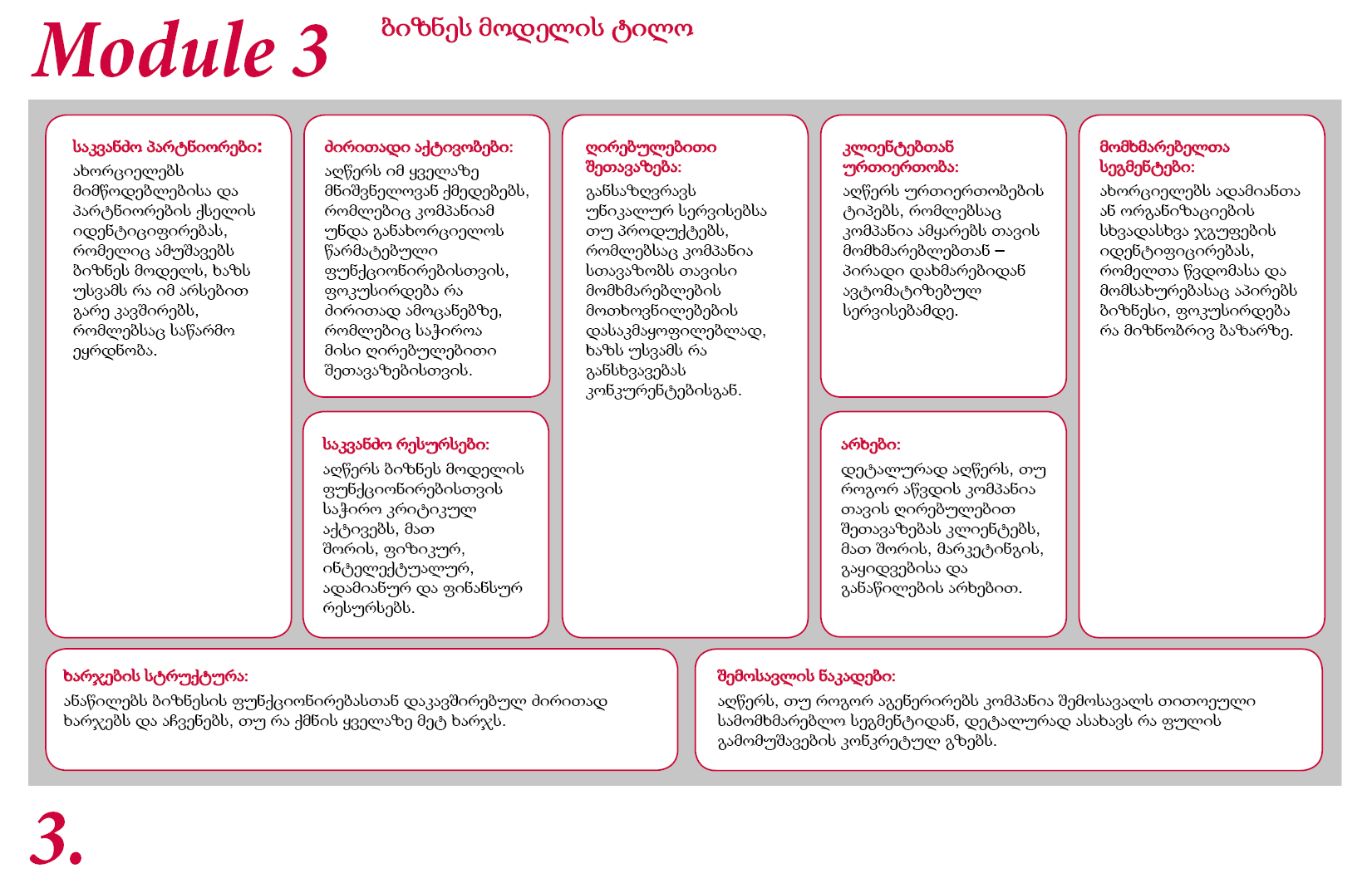
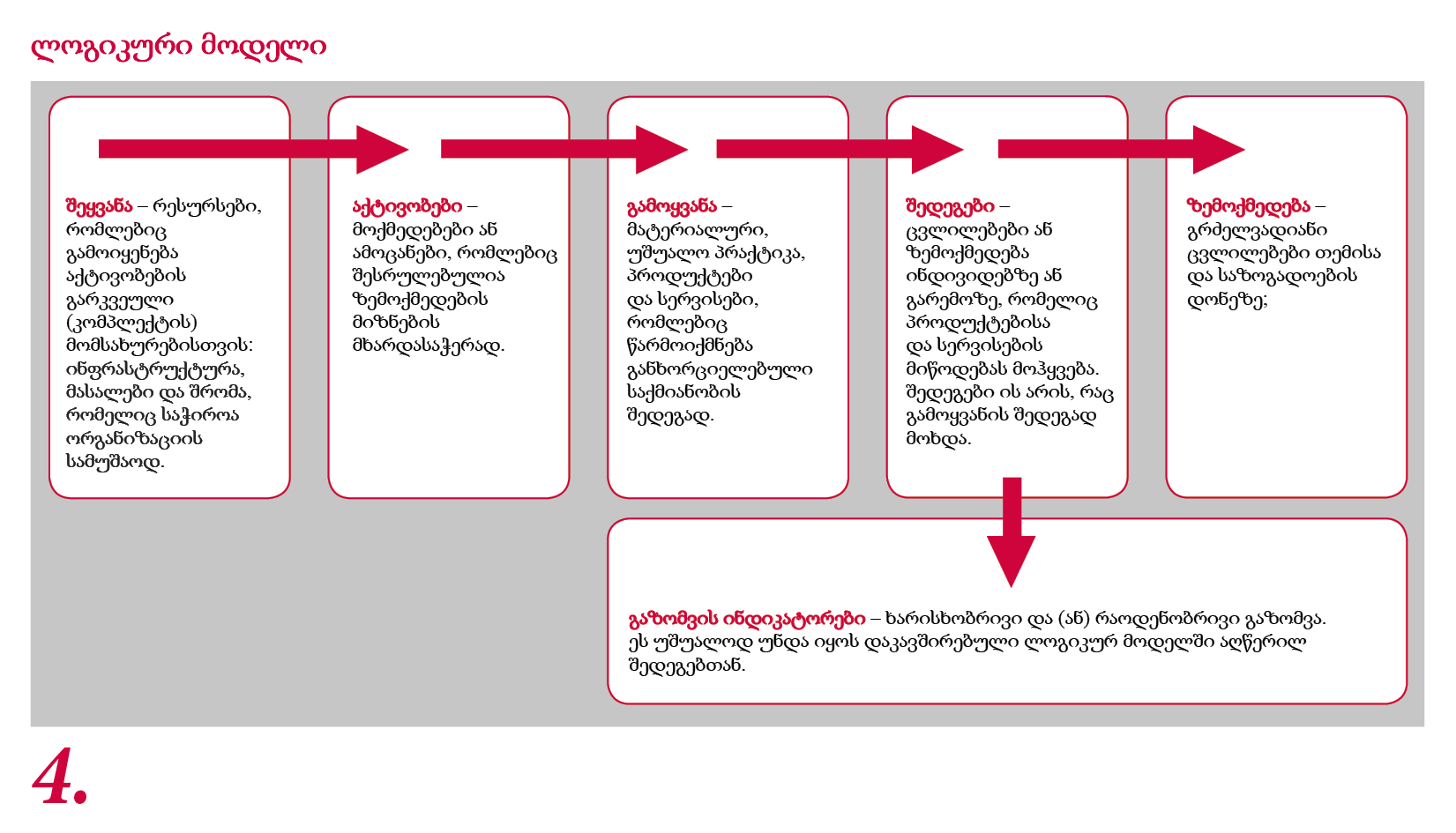 5.2 შედეგების
5.2 შედეგების 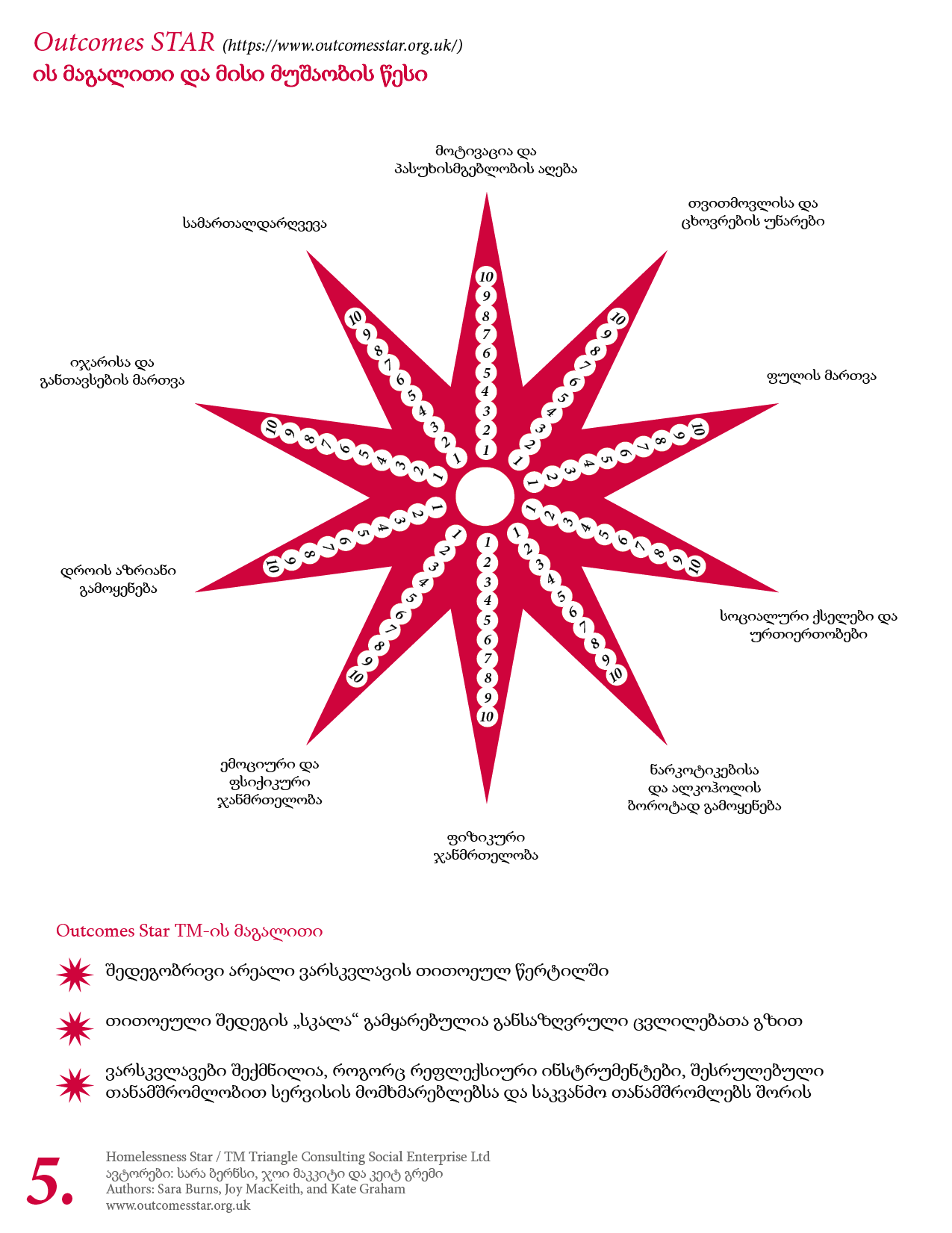 5.3 სოციალური ზემოქმედების შეფასების მატრიცა https://sync.appfluence.com/
5.3 სოციალური ზემოქმედების შეფასების მატრიცა https://sync.appfluence.com/